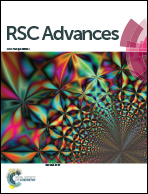Role of Zn-interstitial defect states on d0 ferromagnetism of mechanically milled ZnO nanoparticles
Abstract
Ferromagnetism in the nanostructures of undoped oxide semiconductors has become an exciting problem nowadays for its potential future applications in spintronics. In order to elucidate the room temperature d0 ferromagnetism of oxide semiconductors, we have investigated the changes in magnetic property of ZnO nanoparticles with the reduction of size by mechanical milling. We have observed that ferromagnetic ordering appears in the sample when the particle size decreases from 39 ± 1 nm to 30 ± 1 nm. This observation strongly supports the idea of the effect of specific grain boundaries in nanoparticles. The results of Raman scattering also support this observation. From photoluminescence spectra shifted green emissions have been found for ferromagnetic samples. This indicates clearly two different origins for green emissions that are strongly related to the changes in magnetic property. Observations from electron spin resonance spectra suggest that zinc related interstitial defects are significant to give rise to this ferromagnetic coupling. An impurity level formed by the interstitial defects at the surfaces could satisfy the Stoner criteria for the occurrence of band ferromagnetism for these samples.


 Please wait while we load your content...
Please wait while we load your content...